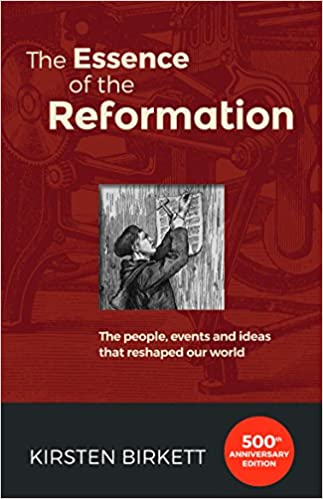A Brief Book Summary from Books At a Glance
by Kirsten Birkett
About the Author
Kirsten Birkett lectured in Ethics, Philosophy, and Church History at Oak Hill Theological College, and is now Theological Consultant for Church Society, an organization within the Church of England.
Contents
Preface
Part I – What was religion like in medieval Europe?
- Pagan beliefs and medieval religion
- Sacraments and priest
- Saints and miracles
- Why the change?
Part II – What happened where?
- Germany
- Switzerland
- France
- Scotland
- England
Part III – A new world
- Did doctrine matter?
- The doctrinal issues
- A changing world
General Summary
A short and readable account of the Protestant Reformation, considering the point-of-view of popular religion as well as official changes.
Preface
Many Reformation ideas, for which Protestants died, are under threat today; it is important for modern Christians to understand why they were worth dying for.
Part I – What was Religion Like in Medieval Europe?
-
Pagan Beliefs and Medieval Religion
In 601, Pope Gregory instructed English missionaries not to destroy pagan temples, shrines, or festivals, but to re-dedicate them to Christian saints. For many ordinary people, medieval Christianity was a mix of pagan and official religion. It could be hard to tell the difference between pagan magic and (for instance) healing water in which the bones of a saint had been washed. In practice, magic and religion were very similar, with a worldview that “the supernatural interacted daily with the natural and could be manipulated, or at least affected, by words and ritual.” Pagan religion was officially condemned but also assimilated. . . .
[To continue reading this summary, please see below....]The remainder of this article is premium content. Become a member to continue reading.
Already have an account? Sign In
Buy the books

THE ESSENCE OF THE REFORMATION: THE PEOPLE, EVENTS, AND IDEAS THAT RESHAPED OUR WORLD, by Kirsten Birkett